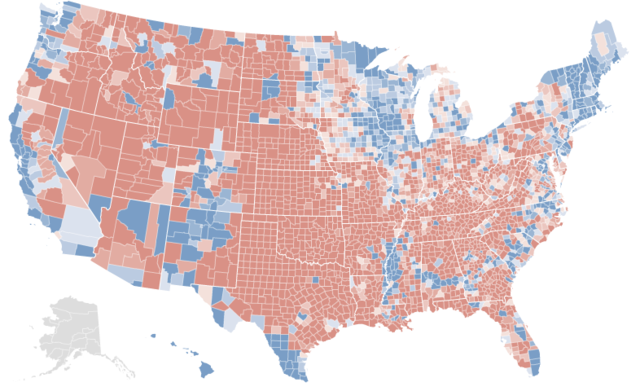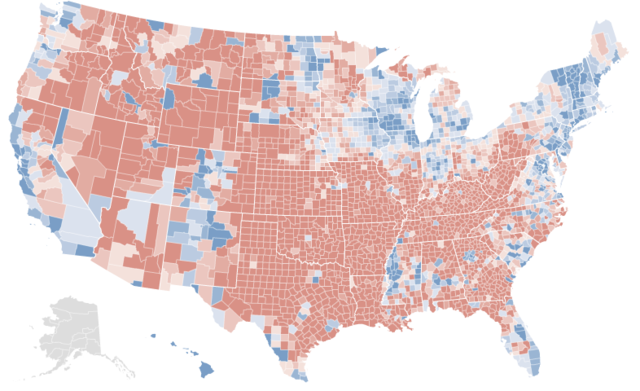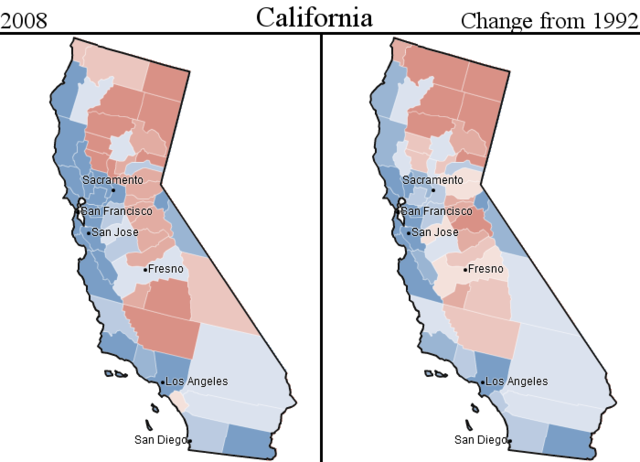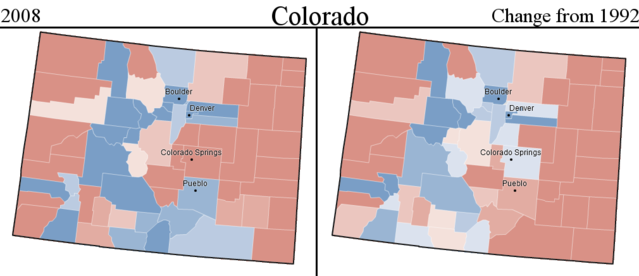• MA-Sen: We’re half a week away from the primary special election in Massachusetts, and AG Martha Coakley is still in the catbird’s seat, at least according to an internal poll from her own camp (conducted by Celinda Lake) that got leaked to Chris Cillizza. Coakley’s at 41, with Rep. Michael Capuano at 21 (consistent with other polls seeing a last-minute surge by the Congressman), Stephen Pagliuca at 10, and Alan Khazei at 7.
• TX-Sen, TX-Gov: This has been broadly telegraphed already, but Houston mayor Bill White made it official today at a press conference: he’s dropping out of the Senate special election that looks less likely to ever happen, and getting into the Governor’s race instead. A Democrat has not won statewide office in Texas since 1994, but White is well-funded and, assuming he faces Rick Perry in the general, his centrist competence may match up well against Perry’s quick-draw conservatism. Also, I’m not the first wag to notice this, but it’s snowing today in Texas, so cue up all the jokes about hell freezing over and Democrats getting elected. (UPDATE: Former Ag Commissioner candidate Hank Gilbert is dropping out of the Dem field in the governor’s race today and heading for another Ag Comnissioner race, which probably isn’t a surprise. However, this part is a surprise: he’s endorsing hair-care guru Farouk Shami instead of White.)
• MN-Gov: Rumors were starting to pop up (via Politico, natch) that Republican ex-Sen. Norm Coleman was trying to raise his profile in preparation for a gubernatorial run. Coleman himself, however, said that’s not the case; he’s focusing on some think-tank work in Washington for now and will look at the “political horizon” later.
• OR-Gov: Here’s a surprise on the fundraising front: Republican Chris Dudley, who’s never run for office before and whose main claim to fame is being the Portland Trail Blazers’ designated free-throw-misser in the late 90s, filed records he already has $340K banked for a still-unannounced gubernatorial run (more than John Kitzhaber’s $280K). Worth noting, though: more than half of that came from only three huge donations, including $100,000 from Dudley’s ex-agent. (An interesting tidbit: $5,000 came from ex-teammate Terry Porter.) Also, Dudley is quickly swinging establishment endorsements his way, including from moderate state Sen. Frank Morse, who was briefly rumored as a candidate himself, and former House majority leader Wayne Scott, who is trying to walk back his previous endorsement of Allen Alley. However, as the Oregonian’s Jeff Mapes points out: “None of them have a firm idea of where Dudley will come down on the issues.”
• PA-Gov: Dan Onorato has been teasing a big endorsement this weekend, but he pulled aside the curtain a day ahead: it’s Rep. Patrick Murphy, which is especially helpful for Onorato as he seeks to gain ground in the Philly suburbs to expand beyond his own Pittsburgh base. On the GOP side, there have been growing calls from newspaper editorial boards for Tom Corbett to either resign as AG or get out of the gubernatorial race, citing the conflict of interest in Corbett having accepted donations from those he’s now charging with crimes in the Bonusgate saga. Yesterday, the Lancaster Intelligencer-Journal joined in.
• SC-Gov: Two items of sort-of-good, or at least somewhat-less-bad, news for Mark Sanford: first, most of the 37 ethics charges against Sanford were dismissed by a state legislative panel. Nine of the charges (involving use of state aircraft) still stand, though, and on Monday, the panel meets again on whether to refer impeachment charges to the full Judiciary committee. And second, a Rasmussen poll finds a narrow plurality saying “no” to the issue of whether he should resign (41-42), and a 36-49 response to the question of whether he should be impeached if he doesn’t resign. 54% say he is “about as ethical” as other politicians.
• TN-Gov: The Democratic gubernatorial field in Tennessee is rapidly shrinking this week: not only did state Sen. Roy Herron jump out to pursue TN-08 instead, but businessman Ward Cammack pulled the plug yesterday after no progress on the fundraising front. That leaves beer baron and gubernatorial progeny Mike McWherter, state Sen. minority leader Jim Kyle, and former state House majority leader Kim McMillan in the hunt.
• CO-07: There’s another Republican entrant in the 7th, where Aurora city councilor Ryan Frazier recently dropped down from the Senate race to take on sophomore Democratic Rep. Ed Perlmutter. Lang Sias, an Iraq vet who worked on veterans’ outreach for the McCain campaign, is getting in the race; he’s also getting some big-name help, including former RNC press secretary Alex Conant.
• IA-03: State Sen. Brad Zaun officially kicked off his campaign yesterday; he’ll face wrestling coach Jim Gibbons for the GOP nod to take on the perpetually shaky Leonard Boswell in the Des Moines-based 3rd.
• IL-14: The GOP field is getting re-arranged in the 14th, and there’s some strategic thinking behind it. Businessman Jim Purcell dropped out, probably because nobody knew who he was, but specifically argued that he didn’t want to split the anti-Ethan Hastert vote, saying that the Hastert name would be poison in the general election. Presumably, his absence will benefit Hastert’s main challenger, state Sen. Randy Hultgren.
• TN-08: TPM has a nice expose of the NRCC’s efforts to not-so-subtly gay-bait state Sen. Roy Herron, who just took over the helm for the Dems in the race in the 8th. They’re trying to get mileage out of Herron’s personal blog, asking why he’s allegedly so focused on his “body image” and then asking (on the issue that Herron has never been a businessman) “So why can’t Roy Herron just be straight with West and Middle Tennesseans and admit it?”
• Polling: I know Rasmussen gets a lot of grief in the comments (and on the front page sometimes, too), so it’s worth taking a look at a recent piece of Mark Blumenthal wondering “Why is Rasmussen So Different?” His answers center on their likely voter model (which should come as no surprise to SSP readers) and also the way they ask their approve/disapprove questions. The article also has a very helpful chart showing the “house effects” of all the major pollsters, showing Rasmussen one of the rightmost, right next to Zogby and Harris. (Interestingly, the graph also shows PPP skewing right-of-center… and Fox News skewing a bit left.)
• Maps: I also know that SSPers like maps, so here are some maps courtesy of the Seattle Times of last month’s King County Executive and Seattle mayor’s races. The KCE results are kind of a no-brainer — the more rural you are, the more likely you were to vote for losing quasi-Republican Susan Hutchison. The Seattle mayor results are very interesting, though, showing the more likely you are to have a scenic view from your house, the more likely you were to vote for Joe Mallahan, showing some class-based fissures between the coalitions of establishment progressive Mallahan and anti-establishment victor Mike McGinn.





